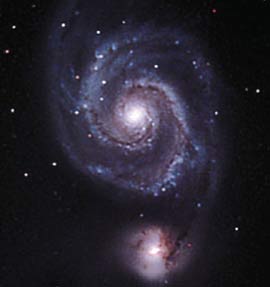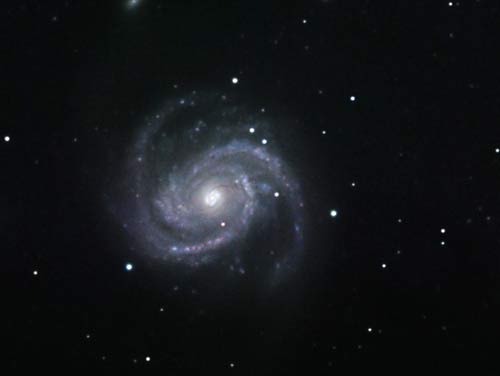Discover 4 more satellite galaxies of the Milky Way
An additional four Milky Way galaxy galaxies have just been discovered, bringing the total number of known satellite galaxies to nearly 20.

Canes Venatici (Photo: meade.com)
According to the New Scientist scientific journal, these four satellite galaxies were discovered by the group of Cambridge University researchers, led by Vasily Belokurov.
These satellite galaxies are named after the names of the constellations where they were discovered: Coma Berenices, Canes Venatici II, Hercules and Leo IV. The largest and smallest galaxy is Hercules and Coma Berenices, which are about 1,000 and 2,000 light-years across.
Astronomers used new observations and detailed sky maps, including the Sloan Digital Sky Observatory (SDSS) to observe these galaxies.
As with most other dwarf galaxies discovered by SDSS, these new galaxies are smaller and fainter than previously known galaxies.
These dwarf galaxies are thought to form large galaxies, such as our own Milky Way galaxy, with a width of about 100,000 light-years.

Coma Berenices (Photo: astrocruise.com)
WALL VY
- The Milky Way is vibrating like a bell.
- The first image of the early Milky Way Strip
- The Milky Way is lighter than we thought
- The Milky Way is lighter than previously thought
- The Milky Way has no numerical date
- What is the Milky Way? What are the different galaxies and galaxies?
- Detecting small galaxies similar to the early Milky Way
- Nearly 900 galaxies hidden behind the Milky Way
- Things you don't know about galaxies
- The true size of the Milky Way
- The 'monster' called the Fairy is about to swallow the galaxy containing the Earth
- Discover a mystical object outside the Milky Way
 Van Allen's belt and evidence that the Apollo 11 mission to the Moon was myth
Van Allen's belt and evidence that the Apollo 11 mission to the Moon was myth The levels of civilization in the universe (Kardashev scale)
The levels of civilization in the universe (Kardashev scale) Today Mars, the sun and the Earth are aligned
Today Mars, the sun and the Earth are aligned The Amazon owner announced a secret plan to build a space base for thousands of people
The Amazon owner announced a secret plan to build a space base for thousands of people